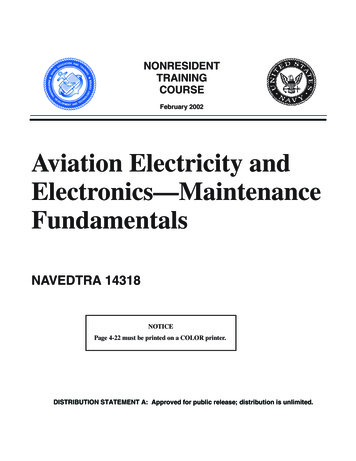
Transcription
NONRESIDENTTRAININGCOURSEFebruary 2002Aviation Electricity andElectronics—MaintenanceFundamentalsNAVEDTRA 14318NOTICEPage 4-22 must be printed on a COLOR printer.DISTRIBUTION STATEMENT A: Approved for public release; distribution is unlimited.
Although the words “he,” “him,” and “his”are used sparingly in this course to enhancecommunication, they are not intended to begender driven or to affront or discriminateagainst anyone.DISTRIBUTION STATEMENT A: Approved for public release; distribution is unlimited.
PREFACEBy enrolling in this self-study course, you have demonstrated a desire to improve yourself and theNavy. Remember, however, this self-study course is only one part of the total Navy trainingprogram. Practical experience, schools, selected reading, and your desire to succeed are alsonecessary to successfully round out a fully meaningful training program.COURSE OVERVIEW: Provides basic information on mathematics, physics,maintenance and troubleshooting, and common test equipment.THE COURSE: This self-study course is organized into subject matter areas, each containinglearning objectives to help you determine what you should learn along with text and illustrationsto help you understand the information. The subject matter reflects day-to-day requirements andexperiences of personnel in the rating or skill area. It also reflects guidance provided by EnlistedCommunity Managers (ECMs) and other senior personnel, technical references, instructions,etc., and either the occupational or naval standards, which are listed in the Manual of NavyEnlisted Manpower Personnel Classifications and Occupational Standards, NAVPERS 18068.THE QUESTIONS: The questions that appear in this course are designed to help youunderstand the material in the text.VALUE: In completing this course, you will improve your military and professional knowledge.Importantly, it can also help you study for the Navy-wide advancement in rate examination. Ifyou are studying and discover a reference in the text to another publication for furtherinformation, look it up.2002 Edition Prepared byATCS(AW) John LinzerandATC(AW) Bryan SlycordPublished byNAVAL EDUCATION AND TRAININGPROFESSIONAL DEVELOPMENTAND TECHNOLOGY CENTERNAVSUP Logistics Tracking Number0504-LP-100-4095i
Sailor’s Creed"I am a United States Sailor.I will support and defend theConstitution of the United States ofAmerica and I will obey the ordersof those appointed over me.I represent the fighting spirit of theNavy and those who have gonebefore me to defend freedom anddemocracy around the world.I proudly serve my country’s Navycombat team with honor, courageand commitment.I am committed to excellence andthe fair treatment of all."ii
TABLE OF CONTENTSCHAPTERPAGE1. Mathematics - Basics .1-12. Mathematics - Applications .2-13. Physics - Basics.3-14. Physics - Applications.4-15. Maintenance and Troubleshooting .5-16. Common Test Equipment .6-1APPENDIXI. Glossary .AI-1II. Reference List .AII-1III. Squares, Cubes, Square Roots, Cube Roots, Logarithms,and Reciprocals of Numbers .AIII-1IV. Natural Sines, Cosines, and Tangents of Angles from 0 to 90 .AIV-1V. Mathematical Symbols.AV-1VI. Formulas.AVI-1VII. Weights and Measures . AVII-1INDEX . INDEX-1iii
INSTRUCTIONS FOR TAKING THE COURSEassignments. To submit your assignment answers viathe Internet, go to:ASSIGNMENTSThe text pages that you are to study are listed at thebeginning of each assignment. Study these pagescarefully before attempting to answer the questions.Pay close attention to tables and illustrations and readthe learning objectives. The learning objectives statewhat you should be able to do after studying thematerial. Answering the questions correctly helps youaccomplish the objectives.http://courses.cnet.navy.milGrading by Mail: When you submit answer sheets bymail, send all of your assignments at one time. Do NOTsubmit individual answer sheets for grading. Mail all ofyour assignments in an envelope, which you eitherprovide yourself or obtain from your nearestEducational Services Officer (ESO). Submit answersheets to:SELECTING YOUR ANSWERSRead each question carefully, then select the BESTanswer. You may refer freely to the text. The answersmust be the result of your own work and decisions. Youare prohibited from referring to or copying the answersof others and from giving answers to anyone else takingthe course.COMMANDING OFFICERNETPDTC N3316490 SAUFLEY FIELD ROADPENSACOLA FL 32559-5000Answer Sheets: All courses include one "scannable"answer sheet for each assignment. These answer sheetsare preprinted with your SSN, name, assignmentnumber, and course number. Explanations forcompleting the answer sheets are on the answer sheet.SUBMITTING YOUR ASSIGNMENTSTo have your assignments graded, you must be enrolledin the course with the Nonresident Training CourseAdministration Branch at the Naval Education andTraining Professional Development and TechnologyCenter (NETPDTC). Following enrollment, there aretwo ways of having your assignments graded: (1) usethe Internet to submit your assignments as youcomplete them, or (2) send all the assignments at onetime by mail to NETPDTC.Do not use answer sheet reproductions: Use only theoriginal answer sheets that we provide—reproductionswill not work with our scanning equipment and cannotbe processed.Follow the instructions for marking your answers onthe answer sheet. Be sure that blocks 1, 2, and 3 arefilled in correctly. This information is necessary foryour course to be properly processed and for you toreceive credit for your work.Grading on the Internet: Advantages to Internetgrading are: you may submit your answers as soon as youcomplete an assignment, andCOMPLETION TIME you get your results faster; usually by the nextworking day (approximately 24 hours).Courses must be completed within 12 months from thedate of enrollment. This includes time required toresubmit failed assignments.In addition to receiving grade results for eachassignment, you will receive course completionconfirmation once you have completed all theiv
PASS/FAIL ASSIGNMENT PROCEDURESFor subject matter questions:If your overall course score is 3.2 or higher, you willpass the course and will not be required to resubmitassignments. Once your assignments have been gradedyou will receive course completion confirmation.E-mail:Phone:If you receive less than a 3.2 on any assignment andyour overall course score is below 3.2, you will begiven the opportunity to resubmit failed assignments.You may resubmit failed assignments only once.Internet students will receive notification when theyhave failed an assignment—they may then resubmitfailed assignments on the web site. Internet studentsmay view and print results for failed assignments fromthe web site. Students who submit by mail will receivea failing result letter and a new answer sheet forresubmission of each failed : (850) 452-1001, Ext. 1776DSN: 922-1001, Ext. 1776FAX: (850) 452-1370(Do not fax answer sheets.)COMMANDING OFFICERNETPDTC N34426490 SAUFLEY FIELD ROADPENSACOLA FL 32509-5237For enrollment, shipping, grading, or completionletter questionsE-mail:Phone:COMPLETION CONFIRMATIONAfter successfully completing this course, you willreceive a letter of completion.Address:ERRATAErrata are used to correct minor errors or deleteobsolete information in a course. Errata may also beused to provide instructions to the student. If a coursehas an errata, it will be included as the first page(s) afterthe front cover. Errata for all courses can be accessedand viewed/downloaded at:fleetservices@cnet.navy.milToll Free: 877-264-8583Comm: (850) 452-1511/1181/1859DSN: 922-1511/1181/1859FAX: (850) 452-1370(Do not fax answer sheets.)COMMANDING OFFICERNETPDTC (CODE N331)6490 SAUFLEY FIELD ROADPENSACOLA FL 32559-5000NAVAL RESERVE RETIREMENT CREDITIf you are a member of the Naval Reserve, you mayearn retirement points for successfully completing thiscourse, if authorized under current directives governingretirement of Naval Reserve personnel. For NavalReserve retirement, this course is evaluated at 9points. (Refer to Administrative Procedures for NavalReservists on Inactive Duty, BUPERSINST 1001.39,for more information about retirement T FEEDBACK QUESTIONSWe value your suggestions, questions, and criticismson our courses. If you would like to communicate withus regarding this course, we encourage you, if possible,to use e-mail. If you write or fax, please use a copy ofthe Student Comment form that follows this page.v
Student CommentsCourse Title:Aviation Electricity and Electronics—Maintenance FundamentalsNAVEDTRA: 14318Date:We need some information about you:Rate/Rank and Name:SSN:Command/UnitStreet Address:City:State/FPO:ZipYour comments, suggestions, etc.:Privacy Act Statement: Under authority of Title 5, USC 301, information regarding your military status isrequested in processing your comments and in preparing a reply. This information will not be divulged withoutwritten authorization to anyone other than those within DOD for official use in determining performance.NETPDTC 1550/41 (Rev 4-00)vii
CHAPTER 1MATHEMATICS - BASICSMathematics is a basic tool. Some use ofmathematics is found in every rating in the Navy, fromthe simple arithmetic of counting for inventorypurposes to the complicated equations encountered incomputer and engineering work. Storekeepers needmathematical computation in their bookkeeping.Damage Controlmen need mathematics to computestress, centers of gravity, and maximum permissibleroll. Electronics principles are frequently stated bymeans of mathematical formulas. Navigation andengineering also use mathematics to a great extent. Asmaritime warfare becomes more and more complex,mathematics achieves ever-increasing importance as anessential tool.3/3-2-10Atf010011/32/312Figure 1-1.—Integers and fractions on the number line.indicating how many of these equal parts are being2considered, the dividend. Therefore, with the fraction3we are dealing with 2 of 3 equally divided parts of awhole.Many of us have areas in our mathematicsbackground that are hazy or troublesome. While it mayseem unnecessary to read chapters on fundamentalarithmetic, these basic concepts may be just the spotwhere your difficulties lie.TYPES OF FRACTIONSWhen using fractions to express the value of a unitmathematically, it normally is stated as a properfraction, improper fraction, or a mixed number.FRACTIONS A proper fraction is one in which the numeratoris numerically smaller than the denominator, for2 3 7example , , , etc.3 4 8LEARNING OBJECTIVES: Identify theparts and types of fractions. Solve mathematical problems that involve fractions.The simplest type of number other than an integer(a positive or negative whole number) is a commonfraction. A fraction is an expression that represents apart, or several equal parts, of a unit. The number linemay be used to show the relationship between integersand fractions. Refer to figure 1-1. For example, theinterval between 0 and 1 is marked off to form threeequal spaces (thirds), then each space is one third of thetotal interval. If we move along the number line from 0toward 1 we will have covered three thirds when we3reach the 1, thus is equal to a whole.3 An improper fraction has a numerator that is4 7 11larger than its denominator, as in , , , and so3 4 8on. A mixed number is a whole number added to aproper fraction, and is usually written without1showing the plus sign; that is, 1 is the same21as 1 .2IMPROPER FRACTIONS AND EQUIVALENTMIXED NUMBERSPARTS OF A FRACTION2(two thirds), the3number after or below the bar is called the denominatorand indicates the total number of equal parts into whichthe unit has been divided, the divisor. The numberbefore or above the bar is called the numerator,Although the “improper” fraction is really “proper”mathematically, it is usually changed to a mixednumber. Conversely, mixed numbers often areconverted to improper fractions for computation.In writing a fraction, as in1-1
Aviation Electricity and Electronics—Maintenance Fundamentals NAVEDTRA 14318 NOTICE Page 4-22 must be printed on a COLOR printer. NONRESIDENT TRAINING COURSE February 2002 DISTRIBUTION STATEMENT A

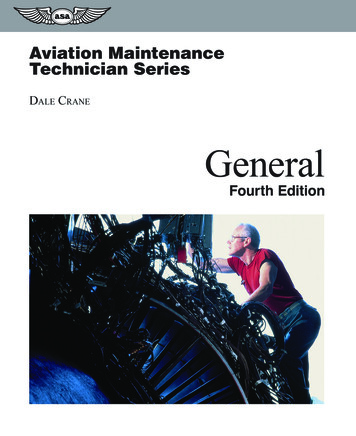

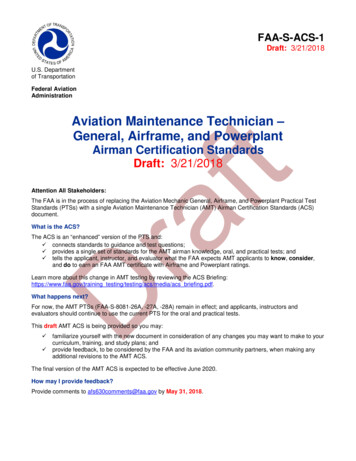

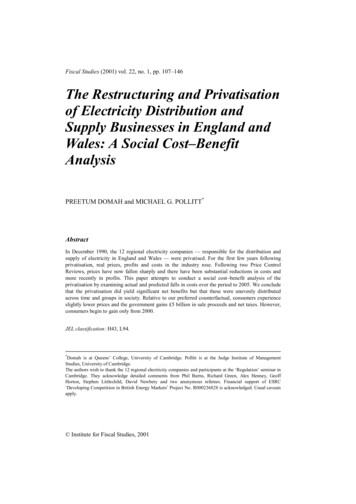


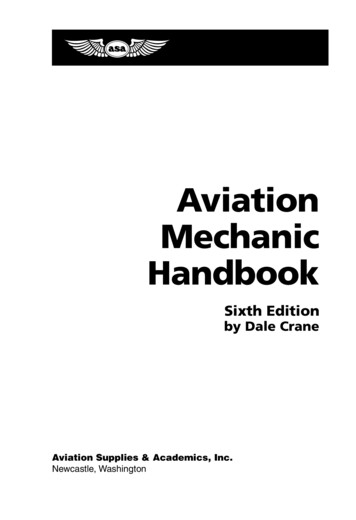
![History of Electronics electricity [Read-Only]](/img/18/history-20of-20electronics-20-20electricity.jpg)
